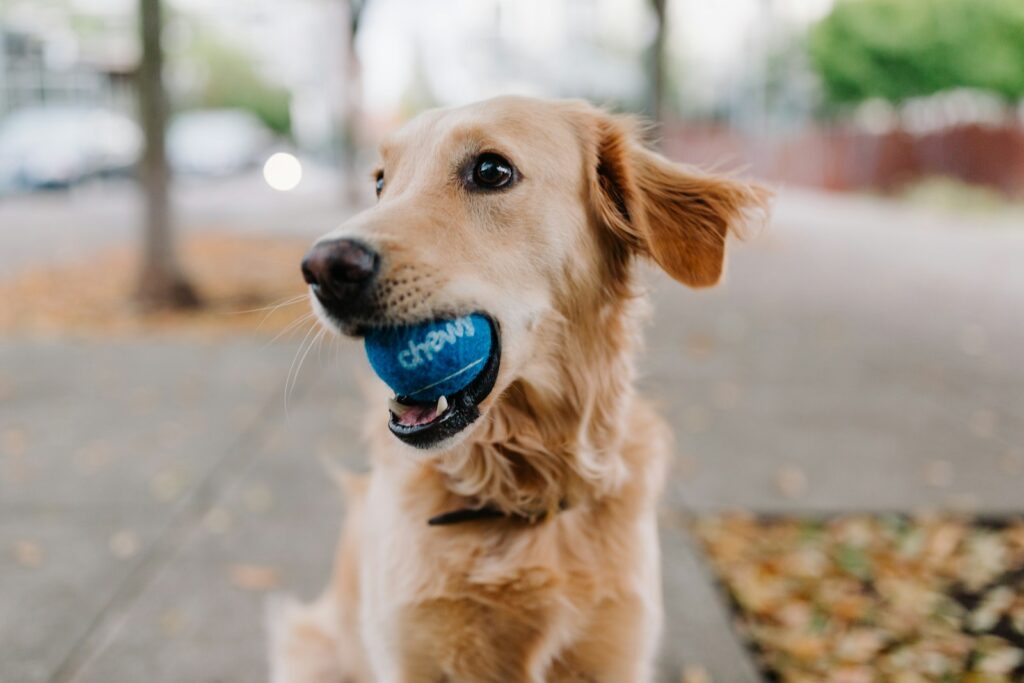Have you ever wondered why your furry friend loves to chase after sticks and balls? If you’ve ever taken your dog for a walk in the park or played fetch in your backyard, you’ve probably noticed their enthusiasm for these simple toys. But what drives this behavior? In this article, we’ll explore the fascinating reasons behind why dogs are so drawn to chasing sticks and balls.
Introduction: The Canine Instinct
Dogs have been our loyal companions for thousands of years, and their behavior is often influenced by their instincts. One of the most common instincts seen in dogs is their prey drive – the natural urge to hunt and capture prey. This instinct can manifest in various ways, including chasing after moving objects like sticks and balls. While domestication has changed some aspects of canine behavior, this primal instinct remains deeply ingrained in many dogs today.
The Thrill of the Chase
1. Instinctual Behavior
Dogs are descendants of wolves, which were skilled hunters. While our modern-day pooches may not need to hunt for their meals, their instincts still drive them to engage in hunting-like behaviors. Chasing after sticks and balls triggers their innate prey drive, giving them a sense of fulfillment and satisfaction.
2. Exercise and Energy Release
Just like humans, dogs need regular exercise to stay healthy and happy. Chasing after sticks and balls provides dogs with much-needed physical activity, helping them burn off excess energy and maintain a healthy weight. This type of exercise also stimulates their minds, keeping them mentally sharp and preventing boredom.
3. Bonding and Socialization
Playing fetch with your dog isn’t just about physical activity – it’s also a great way to strengthen your bond with them. When you engage in interactive play with your furry friend, you’re building trust and creating positive associations. This can be especially important for newly adopted dogs or those who may be shy or anxious.
The Science Behind the Fun
1. Visual Stimulation
Dogs are highly visual animals, and they’re naturally attracted to moving objects. When you throw a stick or ball, the sudden movement grabs their attention and triggers their instinct to chase. This visual stimulation activates the part of their brain associated with hunting and tracking prey.
2. Sense of Achievement
For dogs, successfully retrieving a stick or ball can be incredibly rewarding. When they catch their “prey” and bring it back to you, they’re not just playing – they’re fulfilling a primal need and experiencing a sense of accomplishment. This positive reinforcement encourages them to continue chasing after these objects.
3. Scent Marking and Exploration
In addition to visual cues, dogs rely heavily on their sense of smell to navigate the world around them. When they sniff out a stick or ball, they’re not just interested in the object itself – they’re also exploring the scents left behind by other animals. This sensory experience adds an extra layer of excitement to their playtime.
Conclusion: A Timeless Pastime
So, the next time you throw a stick or ball for your dog, remember that you’re not just providing them with entertainment – you’re tapping into their natural instincts and fulfilling their primal needs. Whether they’re chasing after sticks, balls, or any other object, the joy and satisfaction they experience are timeless reminders of the special bond between humans and dogs.
Remember to cherish these moments with your furry friend, and keep the fun going with plenty of interactive playtime. After all, there’s nothing quite like seeing the sheer delight on your dog’s face as they chase after their favorite toy.
Frequently Asked Questions (FAQs)
Q: Is it safe for my dog to chase after sticks and balls?
A: While chasing after these objects can be fun for your dog, it’s essential to supervise them to prevent accidents or injuries. Avoid using sharp or splintered sticks, and always choose toys that are safe for your dog to chew on.
Q: Why does my dog sometimes lose interest in fetching?
A: Dogs, like humans, can get bored with repetitive activities. To keep fetch exciting for your dog, try mixing things up with different toys or locations. You can also incorporate training exercises or treats to make the game more engaging.
Q: My dog doesn’t seem interested in fetching. Is something wrong?
A: Not all dogs are naturally inclined to fetch, and that’s okay! Every dog is unique, with their own preferences and personality traits. If your dog isn’t interested in fetching, try finding other activities that they enjoy, such as tug-of-war or agility training.



